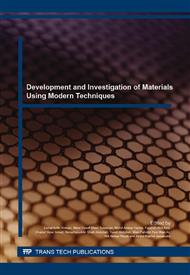p.315
p.321
p.326
p.331
p.336
p.343
p.348
p.353
p.359
Corrosion Study of SAC305 Solder in Acidic Solution
Abstract:
Corrosion resistance performance of Sn-3.0Ag-0.5Cu (SAC305) was evaluated in 1 M hydrochloride acid through potentiodynamic polarization. SAC305 shows active-passive corrosion behavior in acidic solution with two dissolution peaks detected in anodic branch. Microstructure analysis revealed that the corrosion product deposited on the surface after polarization was porous and uneven. This limits the protection offered by the passivation film as the porous structure allows further corrosion attack on the underlying solder.
Info:
Periodical:
Pages:
336-339
Citation:
Online since:
January 2016
Authors:
Keywords:
Price:
Сopyright:
© 2016 Trans Tech Publications Ltd. All Rights Reserved
Share:
Citation:


